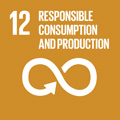- Docente: Beatrice Biondi
- Credits: 6
- SSD: SECS-S/03
- Language: English
- Teaching Mode: In-person learning (entirely or partially)
- Campus: Bologna
- Corso: Second cycle degree programme (LM) in Statistics, Economics and Business (cod. 8876)
-
from Feb 09, 2026 to Mar 11, 2026
Learning outcomes
At the end of the course the student is able to choose, among several discrete choice models, the specification most adequate to solve a specific problem of market analytics. Moreover, he is able to estimate the model, check the model and interpret the results. In particular the student: - has a deep knowledge of the theory related to the main discrete choice models (Multinomial Logit/Probit Model, Neste Logit/Probit Models, Mixed Logit/Probit Model); - has the competence to apply these models to business contexts through the solution of case studies.
Course contents
The course will cover the following topics:
Introductory theory: behavioral assumptions for choice models; derivation of discrete choice models.
Data: revealed and stated preferences; data collection with discrete choice experiments.
Logit/probit binary model; Multinomial logit; Mixed logit. For each model we will see: theory and specification, estimation, result interpretation, practical examples.
Case studies will be developed in computer labs using Apollo package in R, based on real data drawn from examples in the area of consumer choice.
Readings/Bibliography
The course will be mainly based on lecture notes and chapters/papers provided through Virtuale. The teacher will refer also to useful chapters in the following books:
Greene, W. (2009). Discrete choice modeling. In Palgrave handbook of econometrics (pp. 473-556). Palgrave Macmillan, London.
Train, K. E. (2009). Discrete choice methods with simulation. Cambridge University Press.
Hess, S., & Daly, A. (Eds.). (2014). Handbook of choice modelling. Edward Elgar Publishing.
Teaching methods
The course comprises lectures and computer labs for the development of case studies. Applications will be based on real data using R.
Assessment methods
Depending on the number of students, the evaluation could be made through a written exam or a practical case study development with a written essay and an oral presentation in class.
Written exam (60 minutes) with 4-6 open-ended questions; each question is worth 5-7 points depending on scope and required effort. The final score is the sum of the points across questions. The maximum attainable score is 31, which corresponds to a final grade of 30 cum laude. The exam is passed with a score of 18/30. Indicative grading: 30–31 excellent; 27–29 very good; 24–26 good; 21–23 fair; 18–20 sufficient. The use of any supporting materials—textbooks, notes, electronic devices—is not permitted.
Case study development: written essay of 4-5 pages, structured as objective, main theory, empirical model, data, results, discussion and conclusion. The oral presentation lasts 10-15 minutes. The teacher could ask questions related to theory and/or findings during the presentation. The final evaluation is based on quality of the work (e.g. model formulation, interpretation, data management, managerial implication) for 80%, and clarity of the presentation (20%).
Teaching tools
- Lecture slides and notes
- Useful readings (articles, book chapters, etc.)
- Data and codes for tutorials
These materials will be provided and integrated throughout the course, and uploaded on Virtuale platform.
Office hours
See the website of Beatrice Biondi
SDGs


This teaching activity contributes to the achievement of the Sustainable Development Goals of the UN 2030 Agenda.
